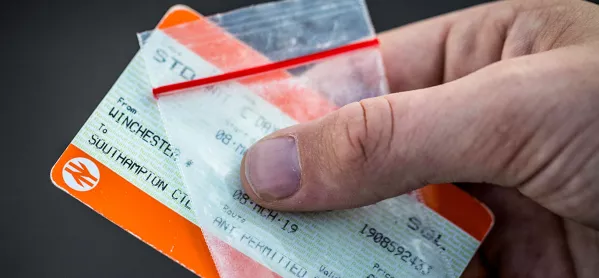7 ways schools can protect pupils from county lines

Experts have today told MPs how schools can improve their efforts to protect at-risk young people from county lines gangs and other criminal exploitation.
According to official figures from the National Crime Agency, at least 27,000 children in England have been identified as members of county lines gangs, which move drugs between cities and more rural areas.
Identifying vulnerable children early - while they are still in primary school - and reducing exclusions were two of the suggestions heard by the Commons Education Select Committee today.
- County lines: How can teachers help to protect pupils?
- Exclusions: Suspensions up by nearly a quarter since pandemic
- Safeguarding: Open schools at weekends to help vulnerable pupils, DfE urged
Stopping exploitation by county lines gangs
Here is a round-up of all the key points from today’s session:
1. “Upskill” teachers
There is often a “piecemeal” approach to engaging with at-risk children that could be “inconsistent and fragmented” in a school context, according to Jahnine Davis, a member of the Child Safeguarding Practice Review Panel and a specialist in the safeguarding of black children.
There was evidence, she told the committee, that a “holistic approach” was more effective than focusing on individual children who might be impacted by county lines.
She said that schools needed to look at policy and “upskilling” teachers and non-teaching staff so they felt confident enough to identify issues and admit what they do not know.
2. Shorten the 10-day reporting threshold for children missing from education
Simon Ford, head of community safety at Southend-on-Sea Borough Council, highlighted the fact that schools only have to report a child as missing from school after 10 days.
He said: “I would suggest that 10 days is probably too long. You’re looking at two weeks missing from school before the school has a duty to then report, and that might need to be looked at.”
3. Keep a closer eye on home education
Home schooling was singled out as a potential way for children who are vulnerable to being exploited by gangs to slip through the safeguarding net.
Mr Ford said he was concerned that local authorities might only check on home schooled children once a year.
“So potentially we’ve got hidden cohorts that we just don’t recognise because of the increase, post-Covid, of home schooling,” he said.
He also highlighted the potential for children to be more at risk from “online exploitation” when they are home schooled.
4. Make sure there are school places for looked-after children
Mark Kerr, deputy chief executive of the Children’s Homes Association, pointed out that “the main challenge” for children’s homes taking in a child at risk from county lines could be securing a suitable school place.
“With maintained schools, there’s a statutory duty to receive a looked-after child and with academies there is not the same duty,” he said.
Academy trusts have previously come under fire for disproportionately rejecting looked-after children who move into an area mid-year.
5. Worry about exclusion rates
The panel echoed ongoing concerns about the levels of school exclusion and “managed moves”, and how that might be making it easier for county lines gangs to find easy recruits. Exclusion rates in academies were singled out as being of particular concern.
Ms Davis said excluded children could develop “a sense of rejection” that could push them towards people who might exploit and harm them.
6. Use outside agencies
Lennox Rodgers, the co-founder and CEO of the Refocus Project youth crime prevention charity, said schools needed more support from outside.
“We need to get our services into schools more. We need to pick up these young people at an earlier stage. It’s very difficult for teachers, police and prison officers to deal with everyone’s problems. They’re there to do a particular job so you need outside agencies to help in schools to be able to deal with some issues,” he said.
Mr Lennox added that people with “lived experience” of criminal and gang life should come into schools to talk to children about the dangers of becoming involved in crime.
7. Focus on the “early signs”
Bali Rodgers, co-founder and director of the Refocus Project, said it was important to target vulnerable children as early as primary school, as her charity had done.
“Early signs” of vulnerability included finding reasons not to attend lessons, getting sent out of lessons for bad behaviour or falling out of class because they had “a neurodivergent issue” that hadn’t been diagnosed or dealt with before moving to secondary school.
She said key underlying issues were money and domestic violence and an overall lack of support for struggling families.
You need a Tes subscription to read this article
Subscribe now to read this article and get other subscriber-only content:
- Unlimited access to all Tes magazine content
- Exclusive subscriber-only stories
- Award-winning email newsletters
Already a subscriber? Log in
You need a subscription to read this article
Subscribe now to read this article and get other subscriber-only content, including:
- Unlimited access to all Tes magazine content
- Exclusive subscriber-only stories
- Award-winning email newsletters
topics in this article



